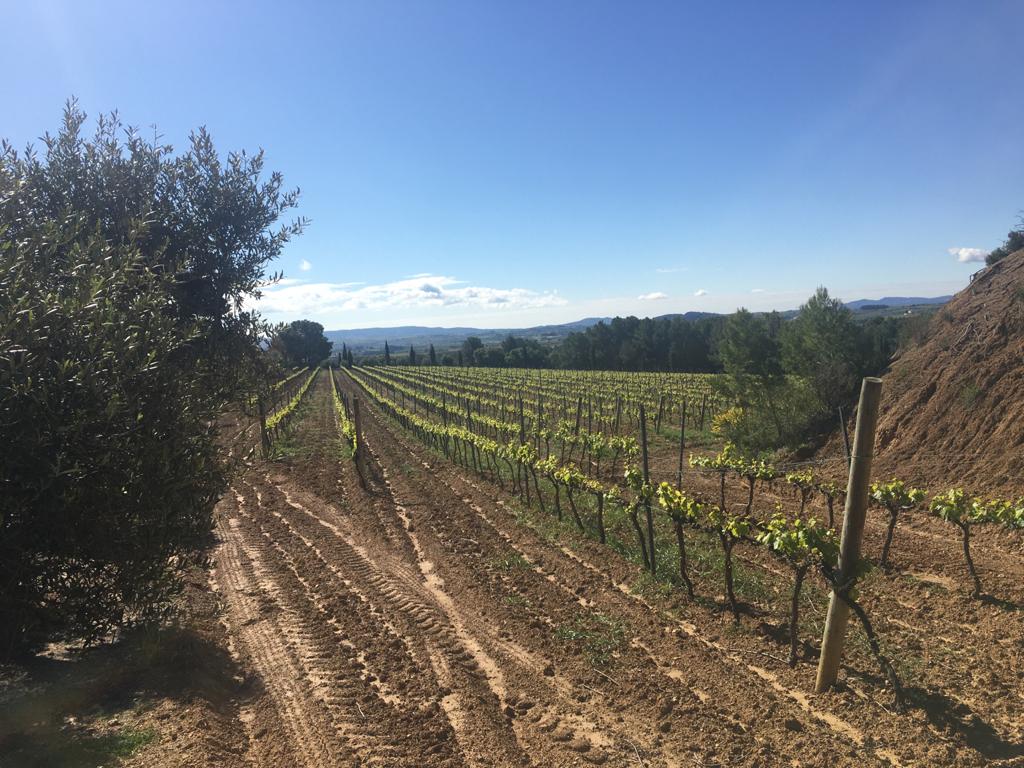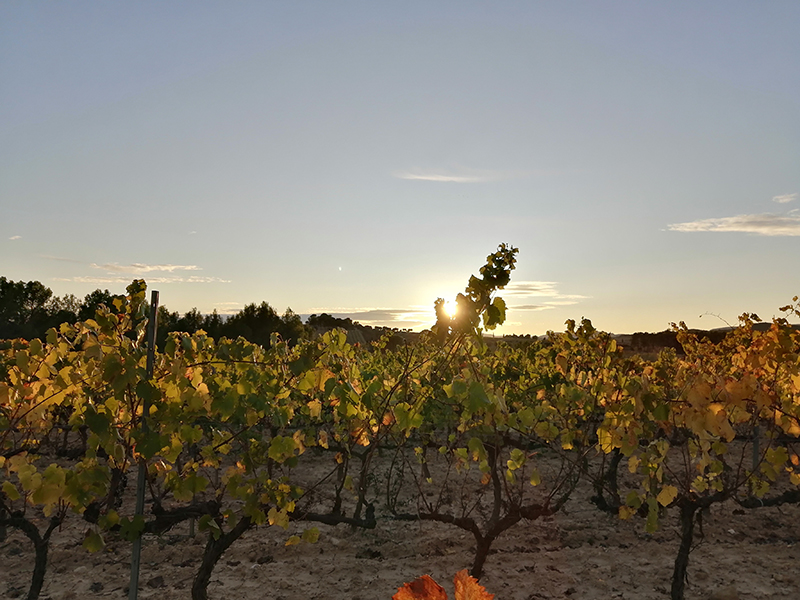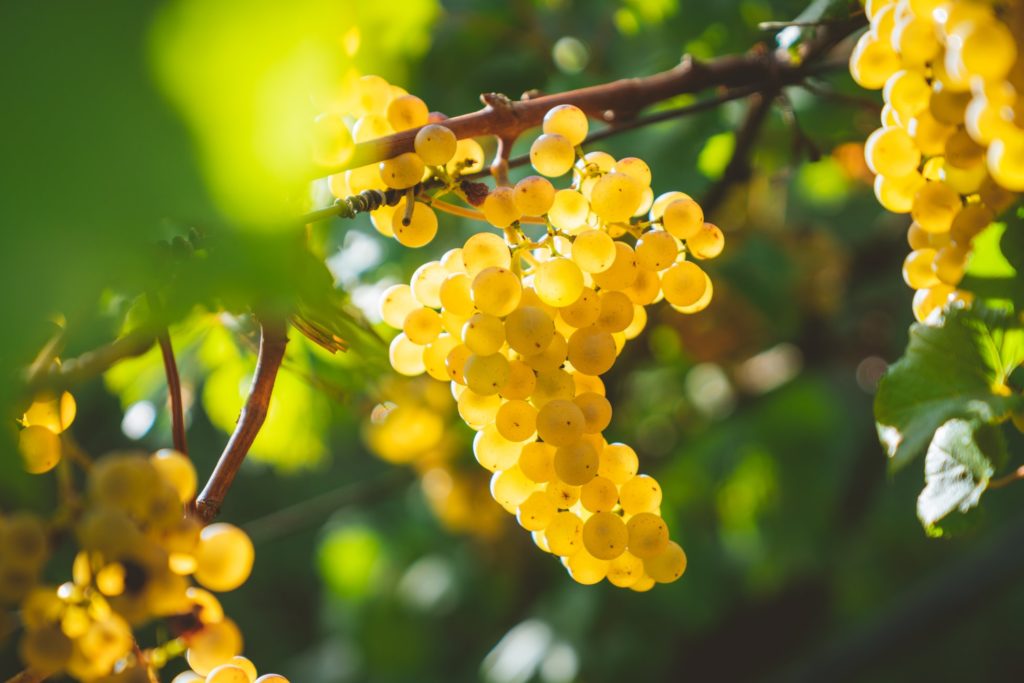Summer is a time full of intensity for the vineyards, the vegetative cycle is close to its end and after the flowering that will give rise to the fruit, we will only have the ripening phase. The long and warm days of the Mediterranean climate are ideal for the ripening of the grapes, but winemakers and winemakers must do a very exhaustive monitoring of the vine during these last months: a very dry climate or a storm can complicate the harvest. In addition, you have to leave everything well tied for the final moment, the harvest. We explain what happens at the Can Parellada de Naveran farm during the summer months.
It all starts with flowering
Do you remember the blog post about spring on our farm? We were talking about the first shoots. Well, during the course of spring the inflorescences appear and, little by little, with the arrival of the heat, the grape shoots separate and their inflorescences turn into flowers. But … Where are these flowers found? The truth is that they are not exactly as we can imagine a flower: the flowers of the strain are not very showy, the petals cannot be distinguished and they have a color similar to the buds themselves. We have to look closely to see that groups of small flowers have appeared on the buds. But it is our flowers that will give life to the fruit, after its fertilization.

The flowers of the strain have male reproductive organs, the stamens, and female, the pistil (surely you remember the kinds of natural environment from your childhood). Flowering is known as the process by which the flower is fertilized, that is, the pollen from the stamens reaches the pistil and germination occurs. This process begins in May and lasts until June, but the temperature can accelerate it. And is that the weather is a determining factor, for example, if we have a rainy spring, low flowering. Also, some varieties that are more sensitive than others or not all the grains are pollinated and then the seeds cannot become fruit … The ideal climatic conditions are a warm spring with a little wind for the pollen to travel , also helped by insects.
Therefore, the future harvest will depend on the flowering. If it is good, there will be many large fertilized that will become grapes.
Remember that with pruning we regulate production. At Cavas Naveran we carry out short and restrictive pruning to limit the natural growth of the vines and make them produce less. We do it because we are not looking for large quantities of grapes for the harvest, but rather we are looking for quality. Well, during the month of May we do a second pruning, so the grapes are more aerated, the treatments penetrate better and the harvest is facilitated. Therefore, from here on, we want the flowering to be a success! As you must already suppose, not all flowers are fertilized: it is an exciting process of nature, but it depends on several factors, such as the fact that the pollen does not arrive, or other external factors such as the climate (which we have already commented on) or the soil quality, that is, the nutrients that it can provide to the strain.
Maturation
With flowering, the growth phase ends and ripening begins, the stage in which the fruit develops and gradually turns into grapes. This process is called quallat. Here we still cannot appreciate the characteristics of the grape, but there is a moment, called envero, in which the grapes of white varieties go from green to golden tones and those of red varieties acquire violet tones.
The veraison is a new phase of maturation that marks a turning point: we will be able to clearly appreciate the characteristics of the fruit and from here the countdown to the harvest begins. It takes place, approximately, in the month of July and it is calculated that then only 25 to 35 days will be left for the maturation to finish and the grapes to be ready to be harvested. During these days, the grape gains amount of sugar and loses acidity and astringency. The optimum point, the balance between the different types of maturation, is chosen by the winemaker when he decides when to harvest.

During the maturation phase, the work of winemakers and winegrowers may seem very simple, but it is extremely decisive: observe, analyze, calculate and predict. You have to be vigilant in case pests such as malura appear, in case you have to do some other treatment …
At Naveran at the beginning of July we have almost all the treatments ready. We will only have to do the last ones in mid-July and then nothing else is done until August 1, when the ripening begins to be controlled. Yes, to analyze the parameters of acidity and degree and pH, to know when the varieties will reach their optimum points of maturity … All this in order to organize the harvest, a moment where everything has to work like clockwork, since each variety has to be harvested in its own time and many resources are needed in a very short time.

As we have said, each variety has a different rate of maturation. In Naveran we will start by harvesting the pinot noir variety in mid-August (approximately) and we will continue with chardonnay, macabeu, merlot, xarel lo, syrah, viognier, parellada and, finally, we will finish with cabernet sauvignon.
The cycle does not stop
People need to stop in the summer to rest and enjoy, but you see that work continues in the field. And it is that the work of the viticulturist consists of listening to the land and understanding that each variety, each vine is unique. Only by adapting to the vineyard will we get its best fruits. There is less left for the harvest (we are really looking forward to it !!), this fast-paced stage will give us a new harvest of different varieties! Ay … In our heads we can already start savoring the new vintages. Do you want to try them?


